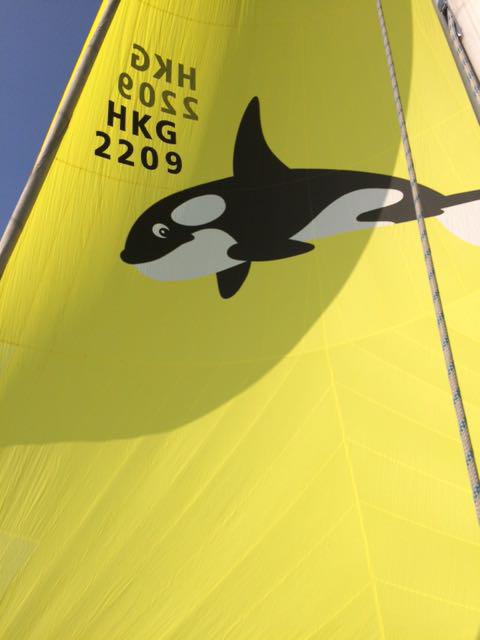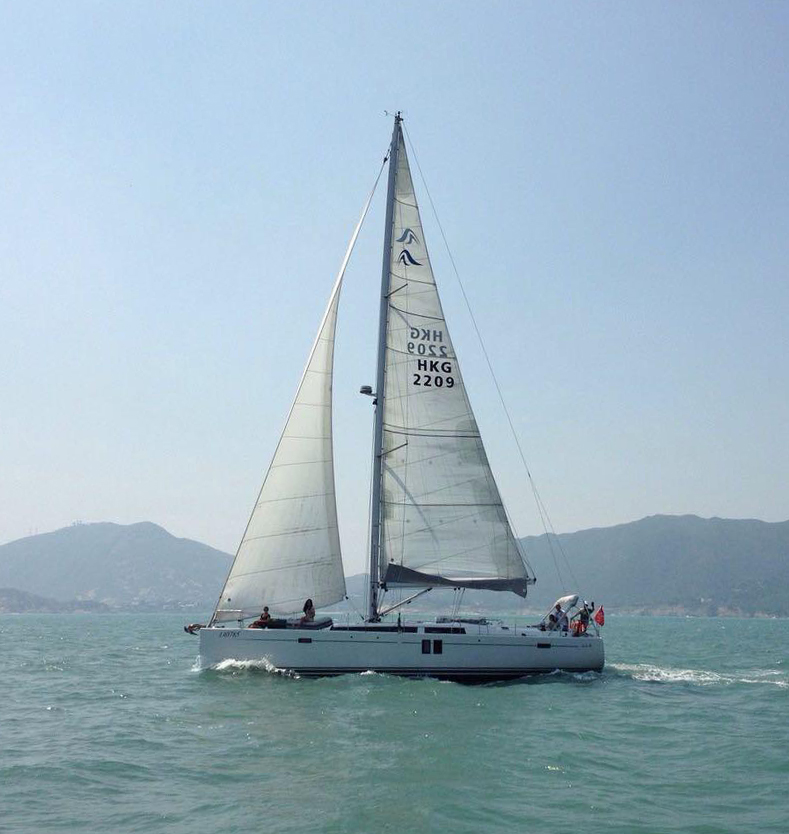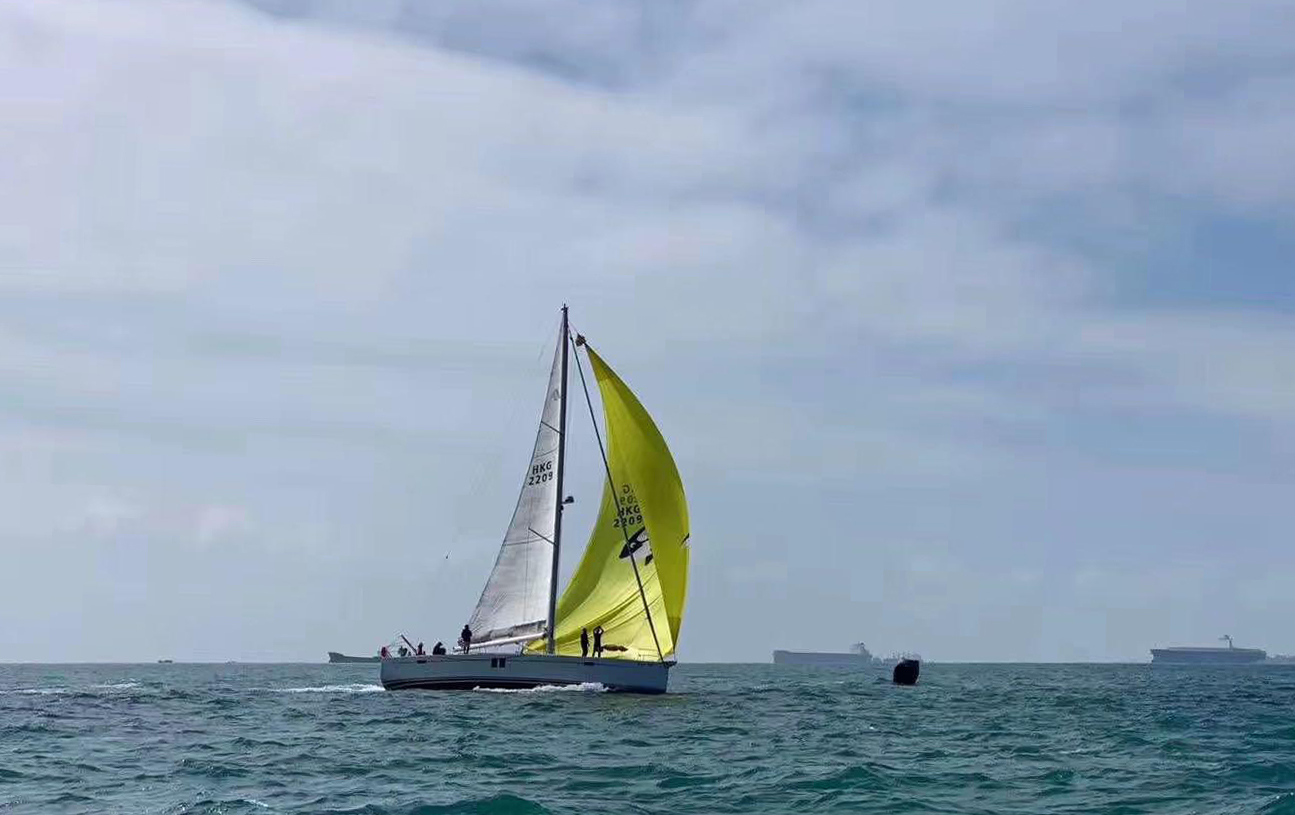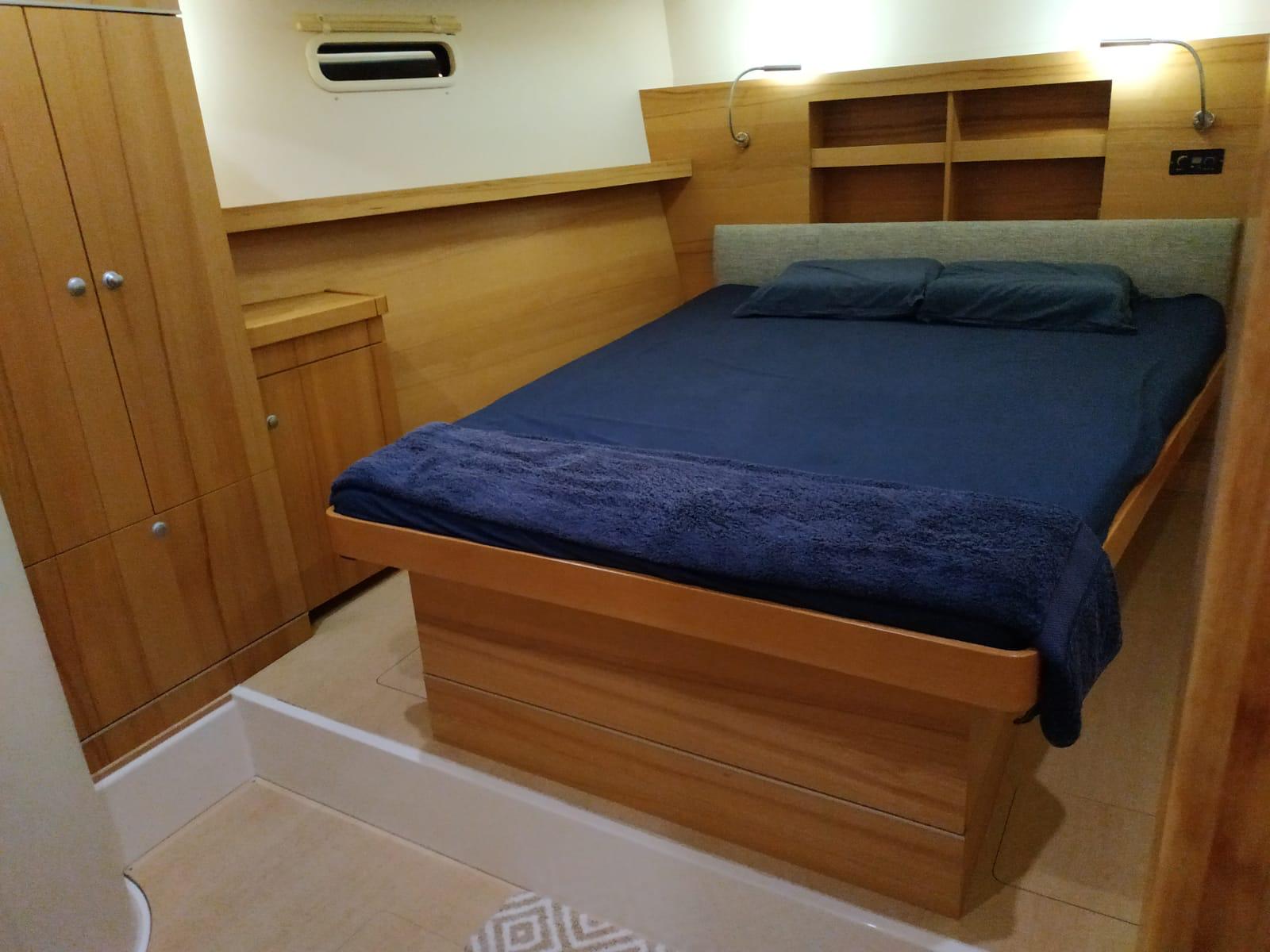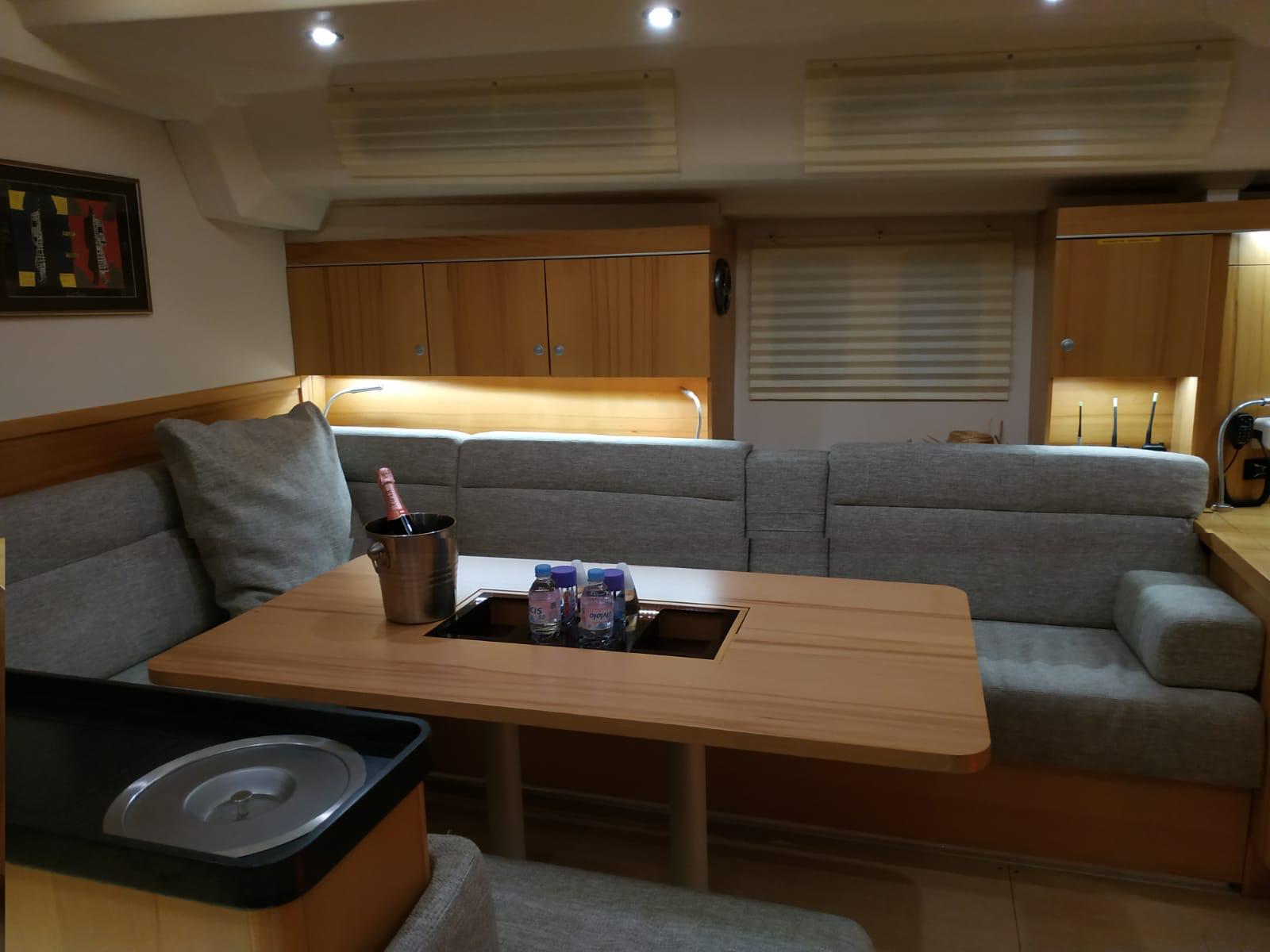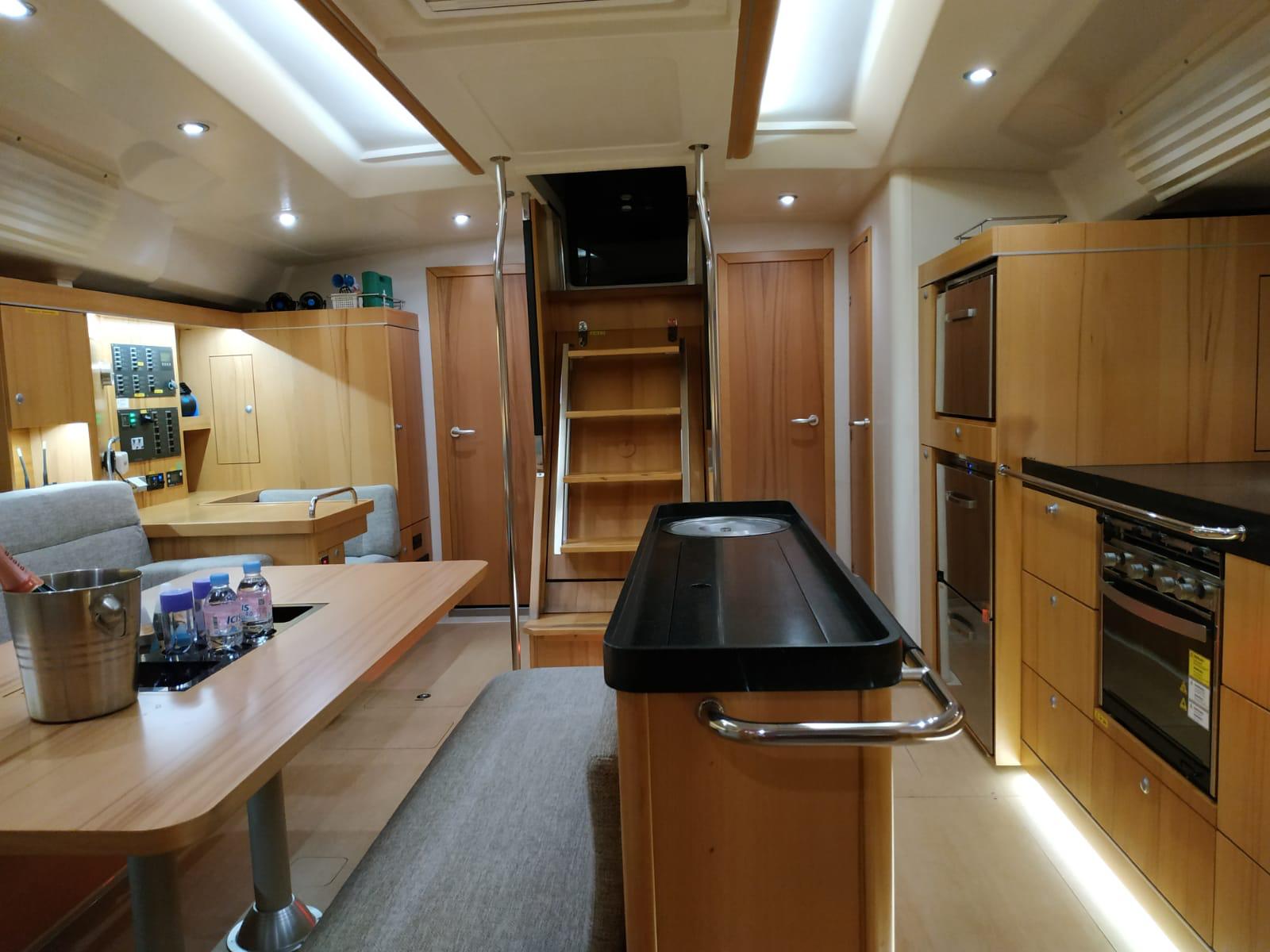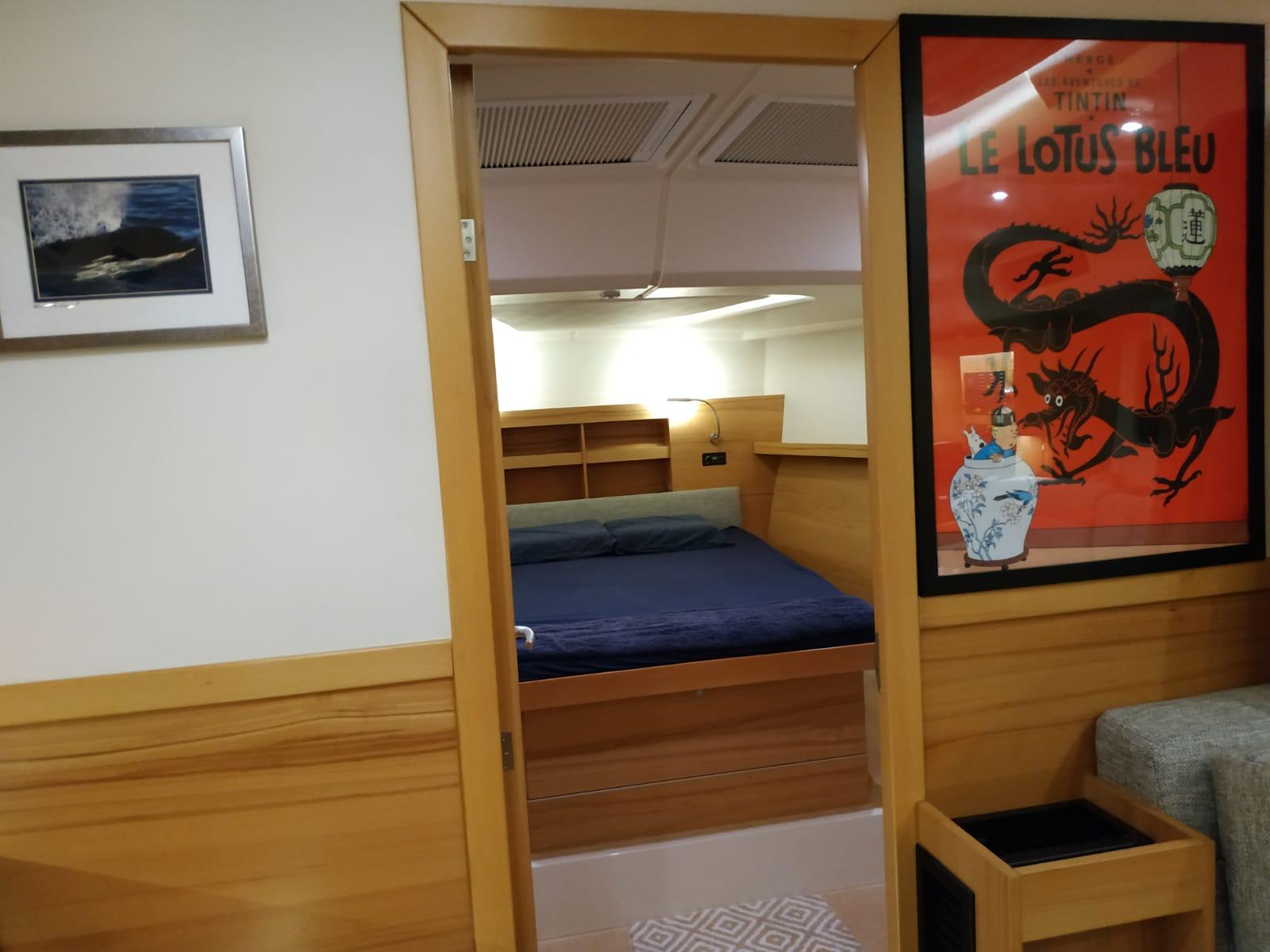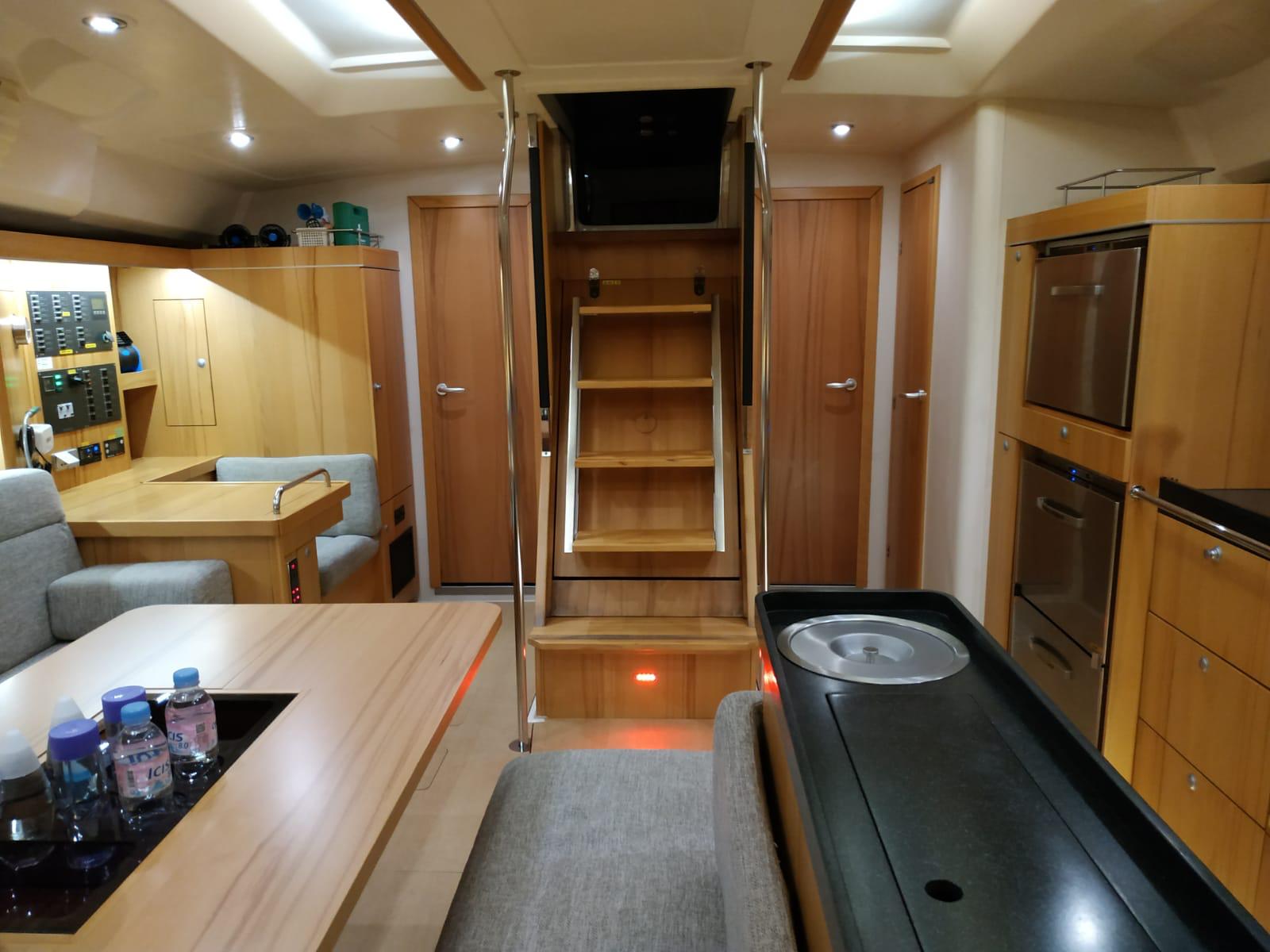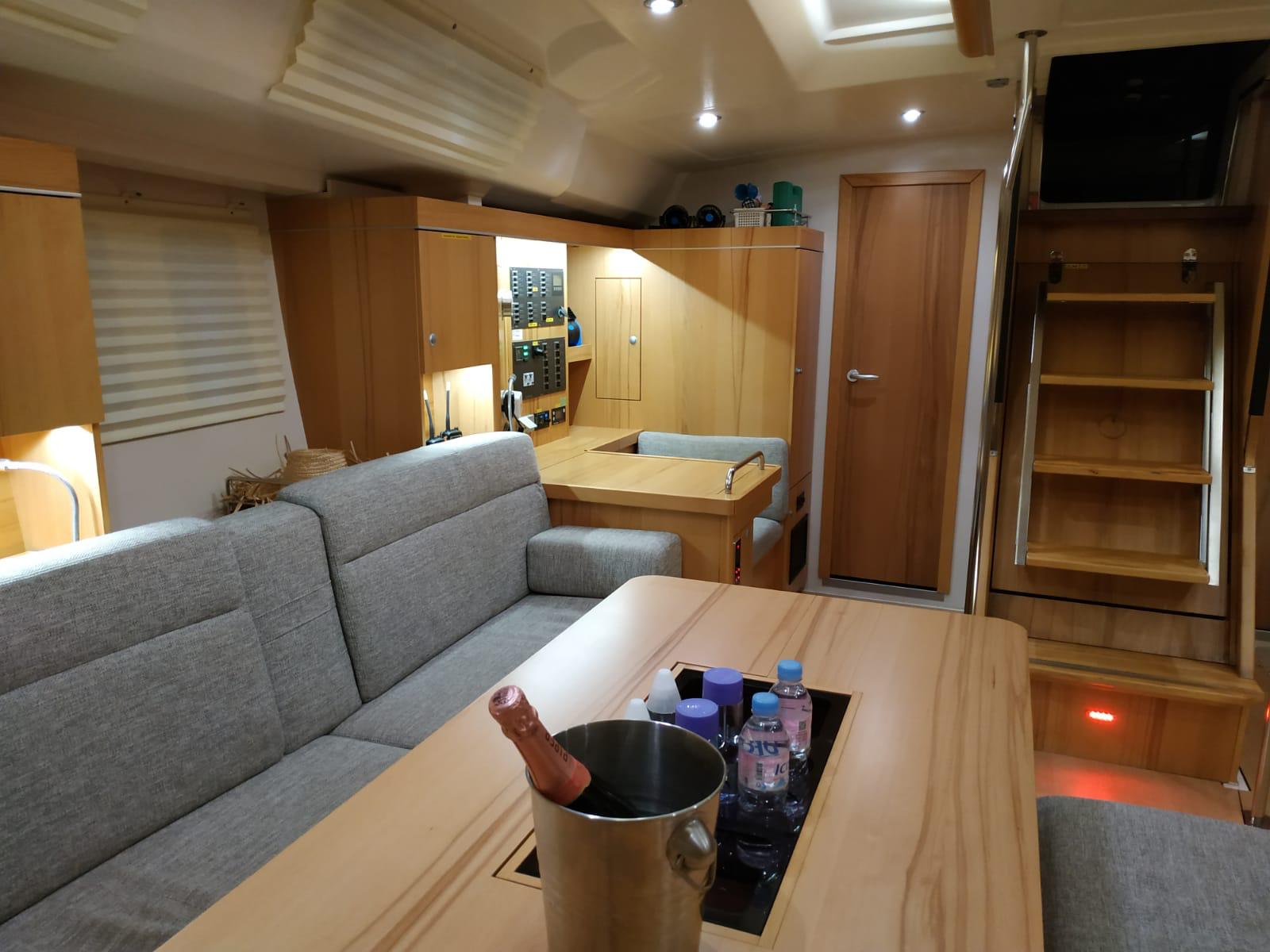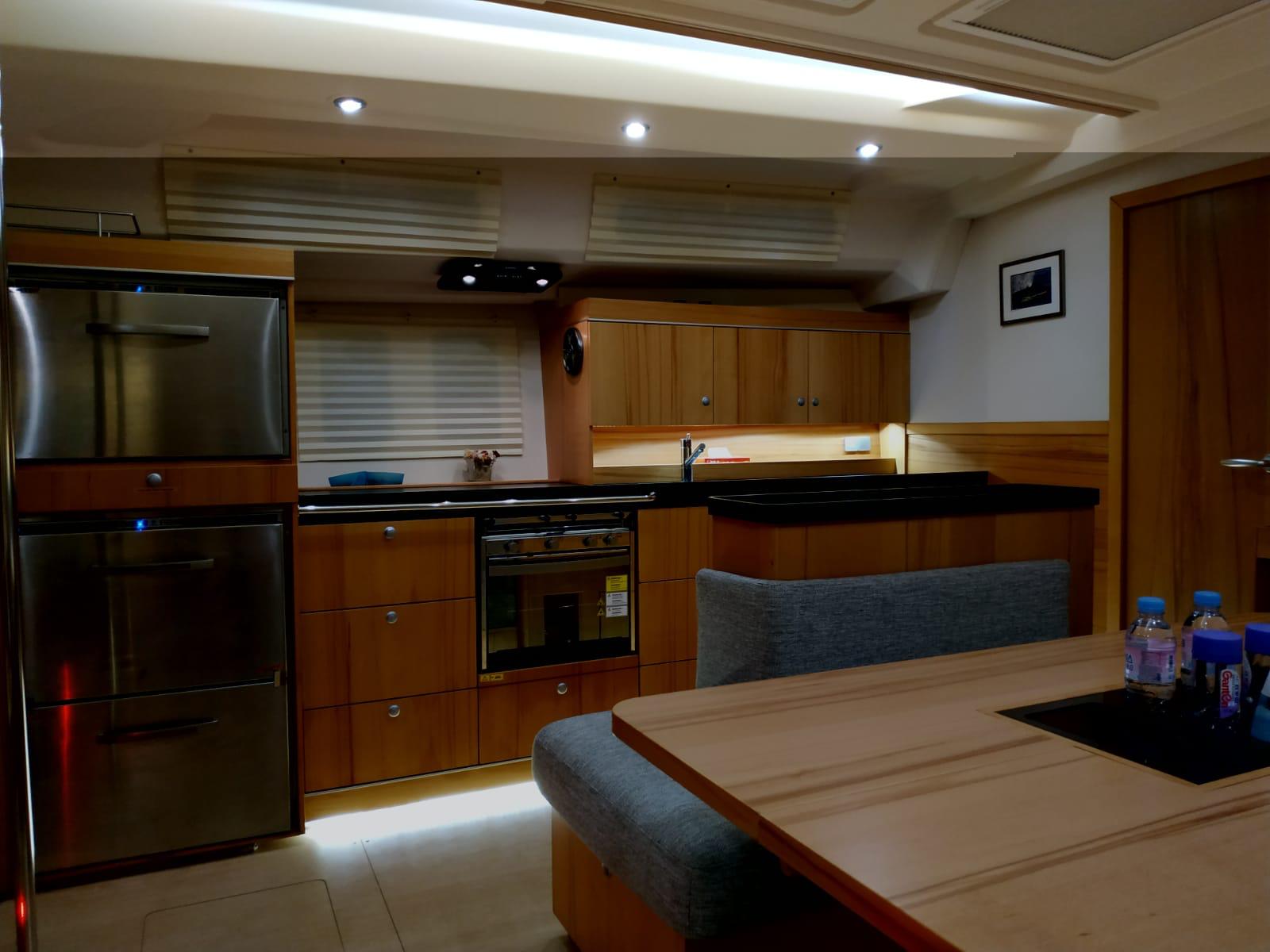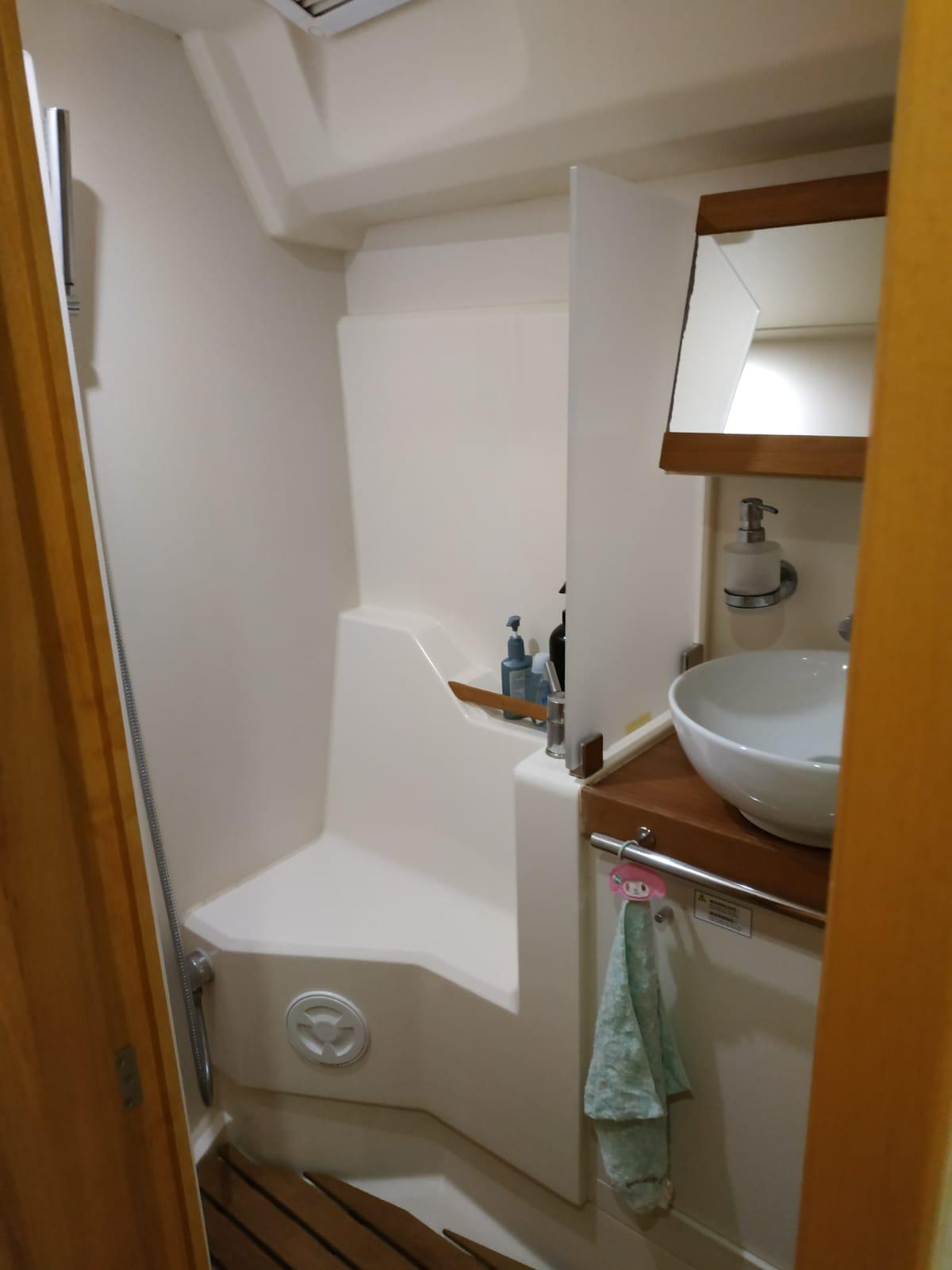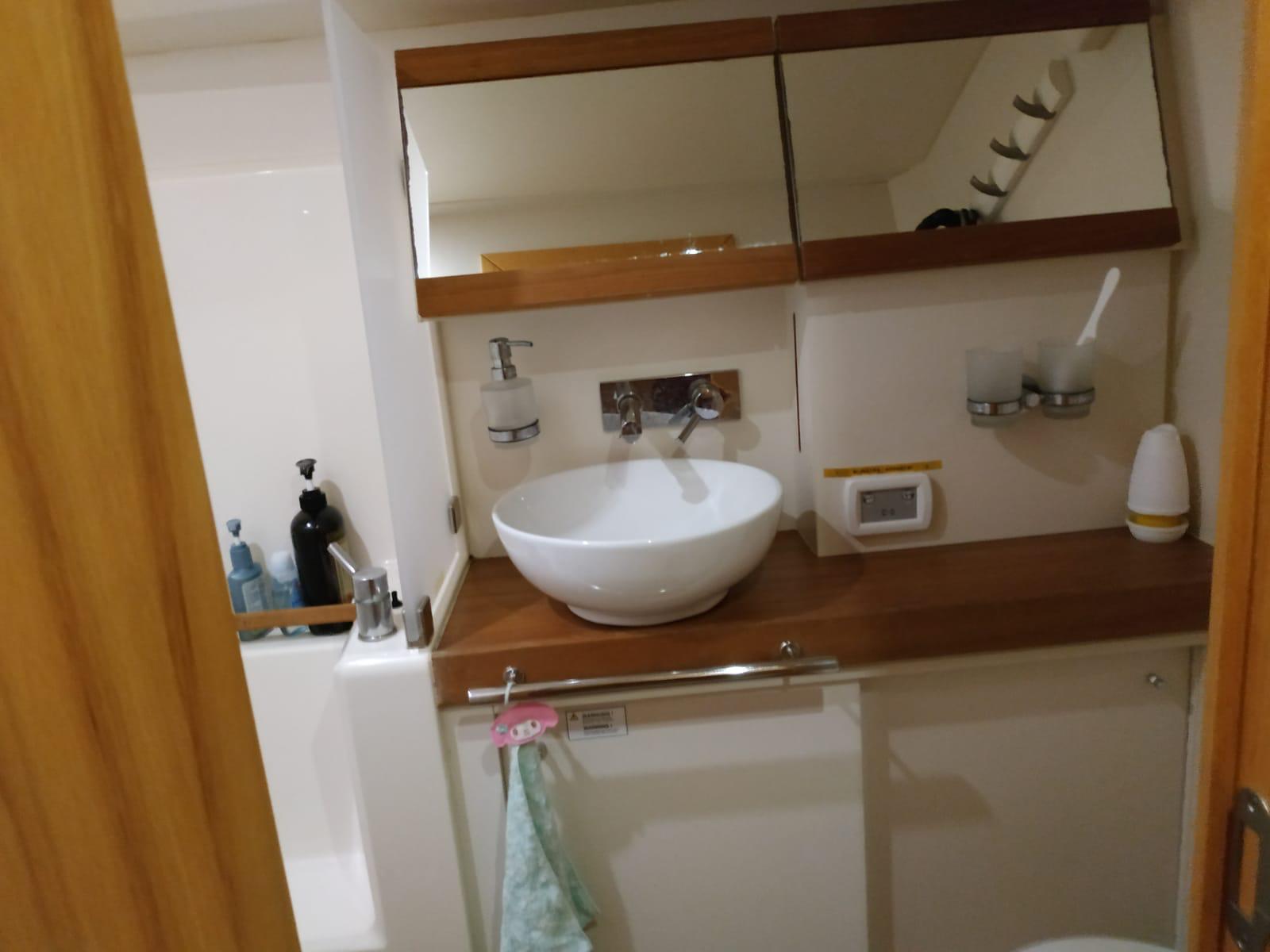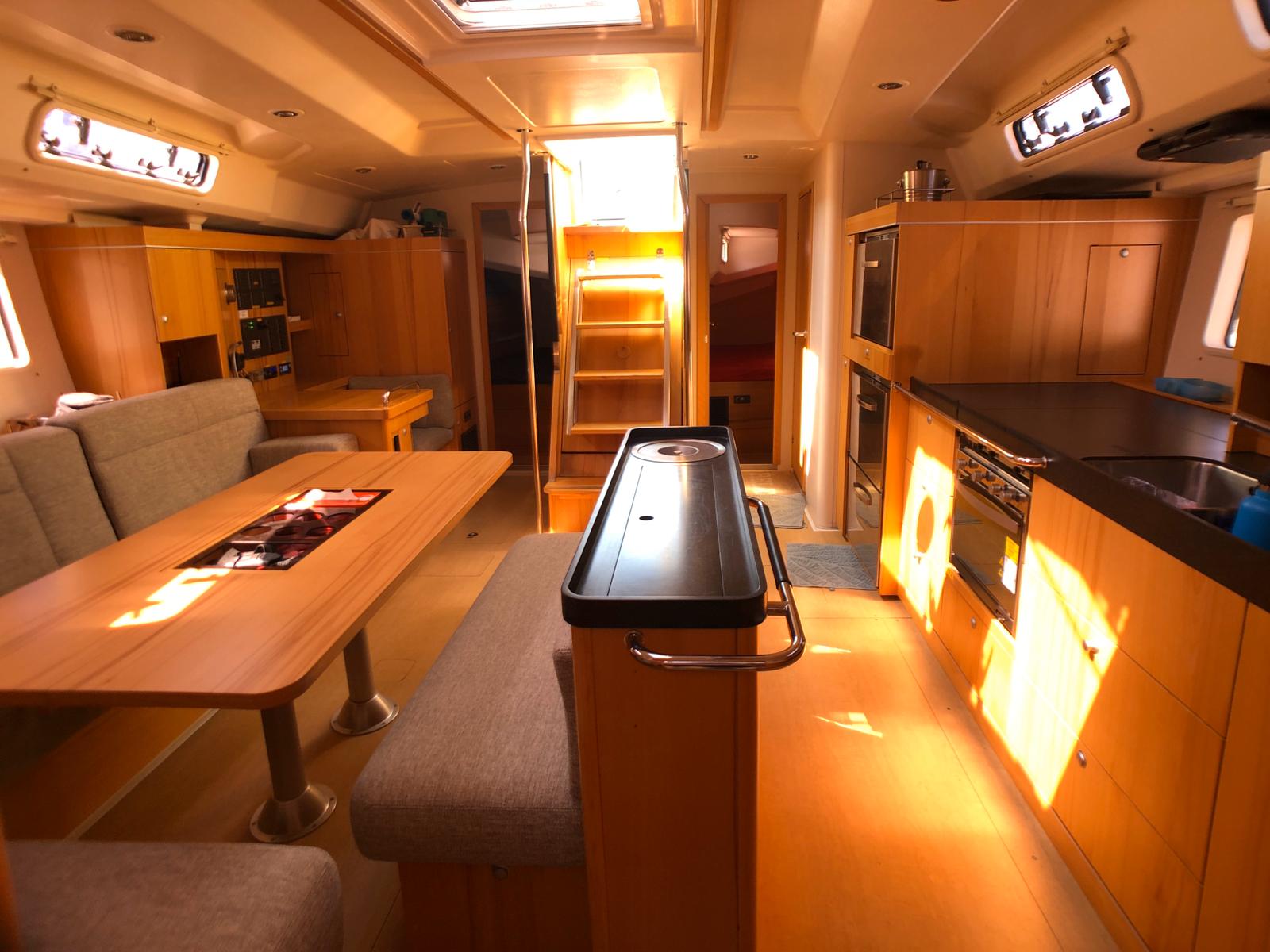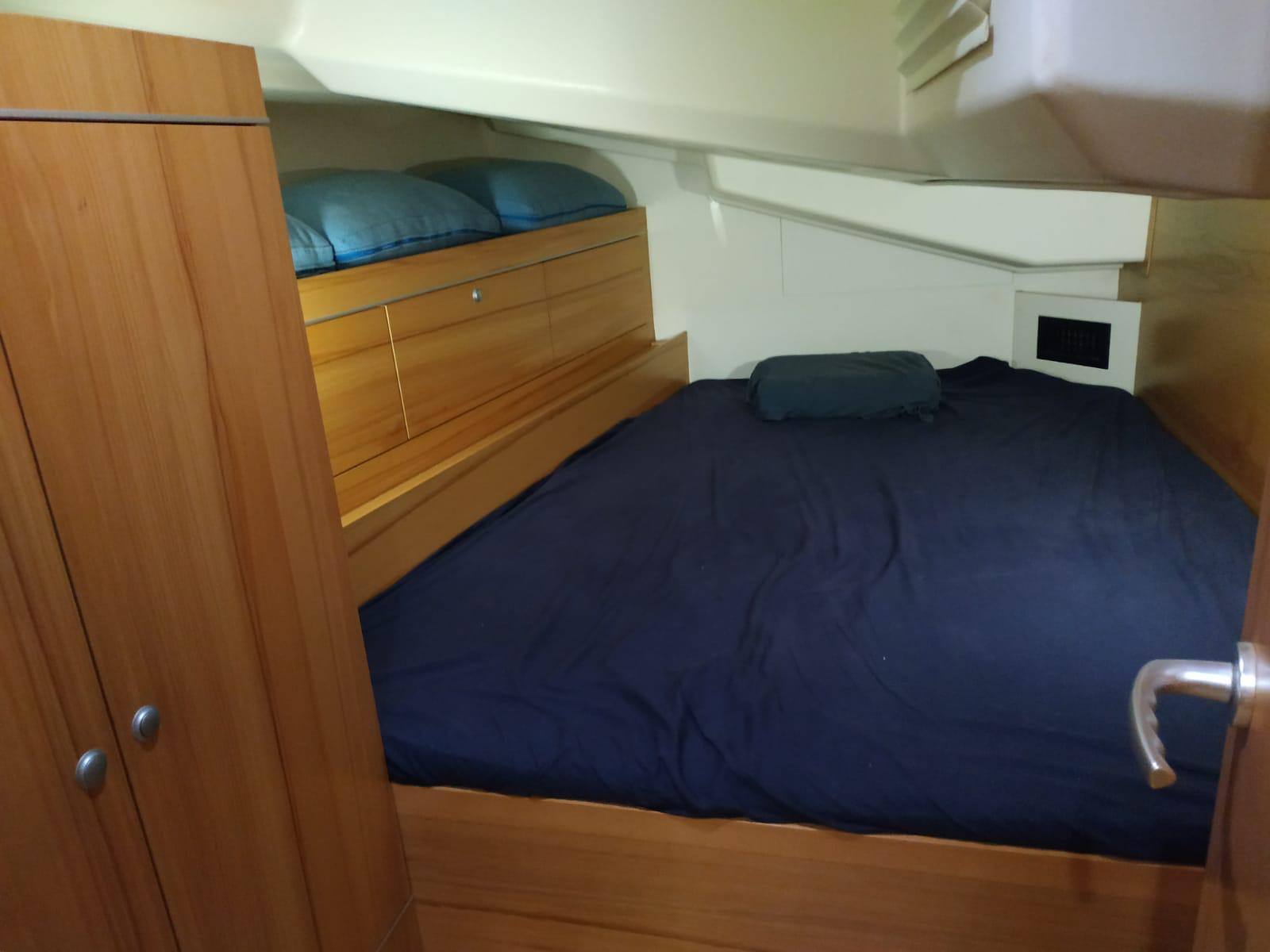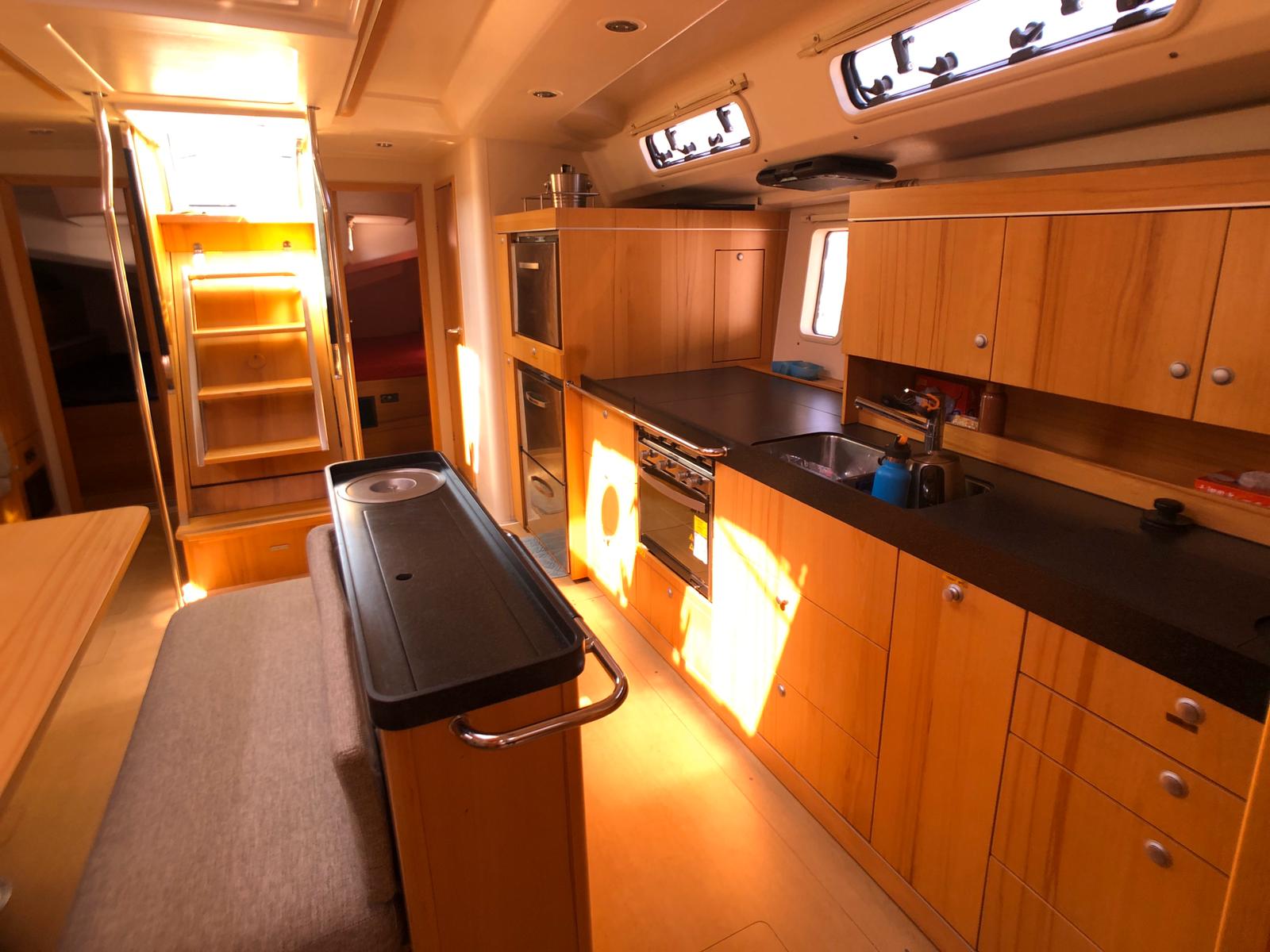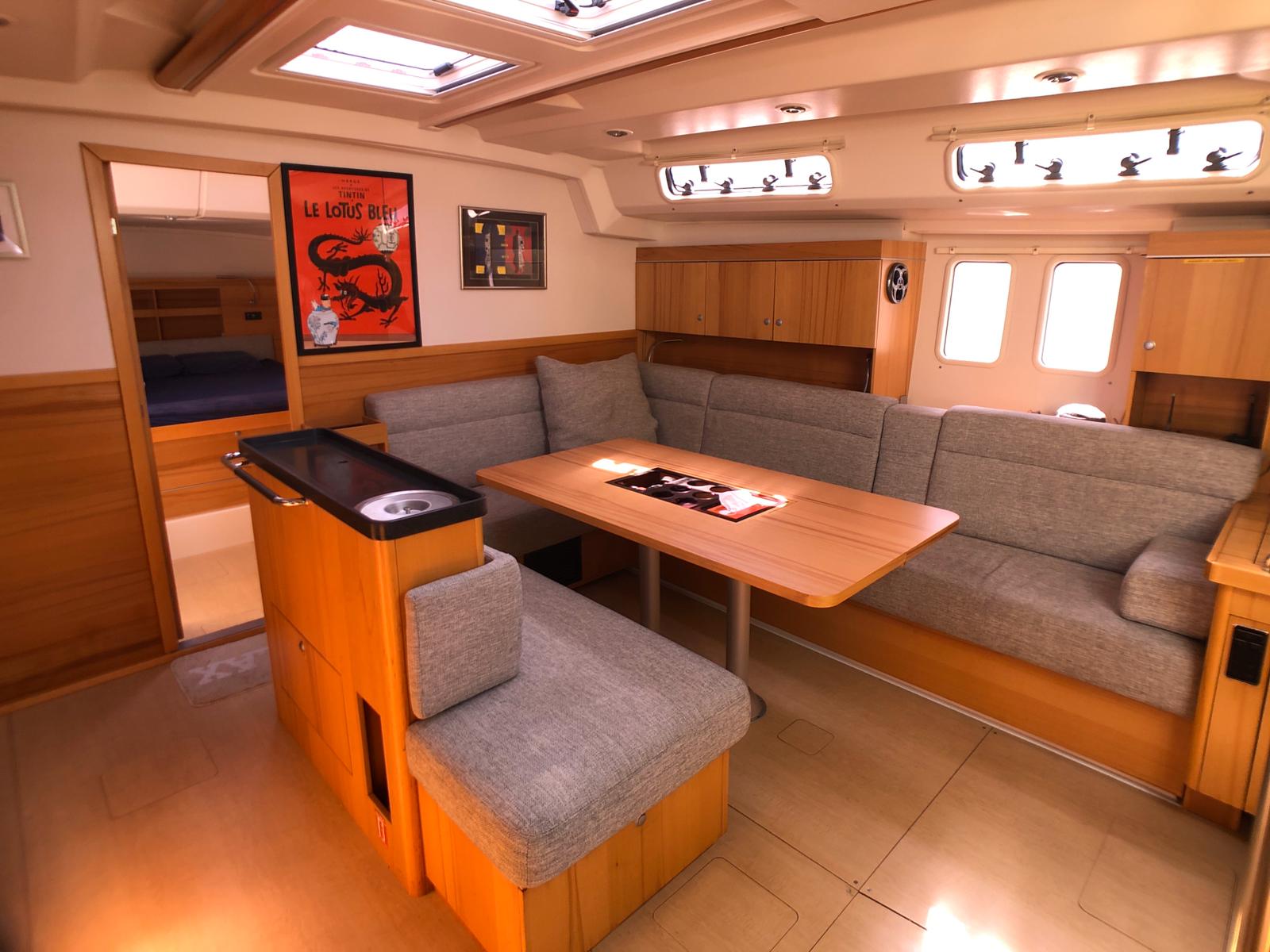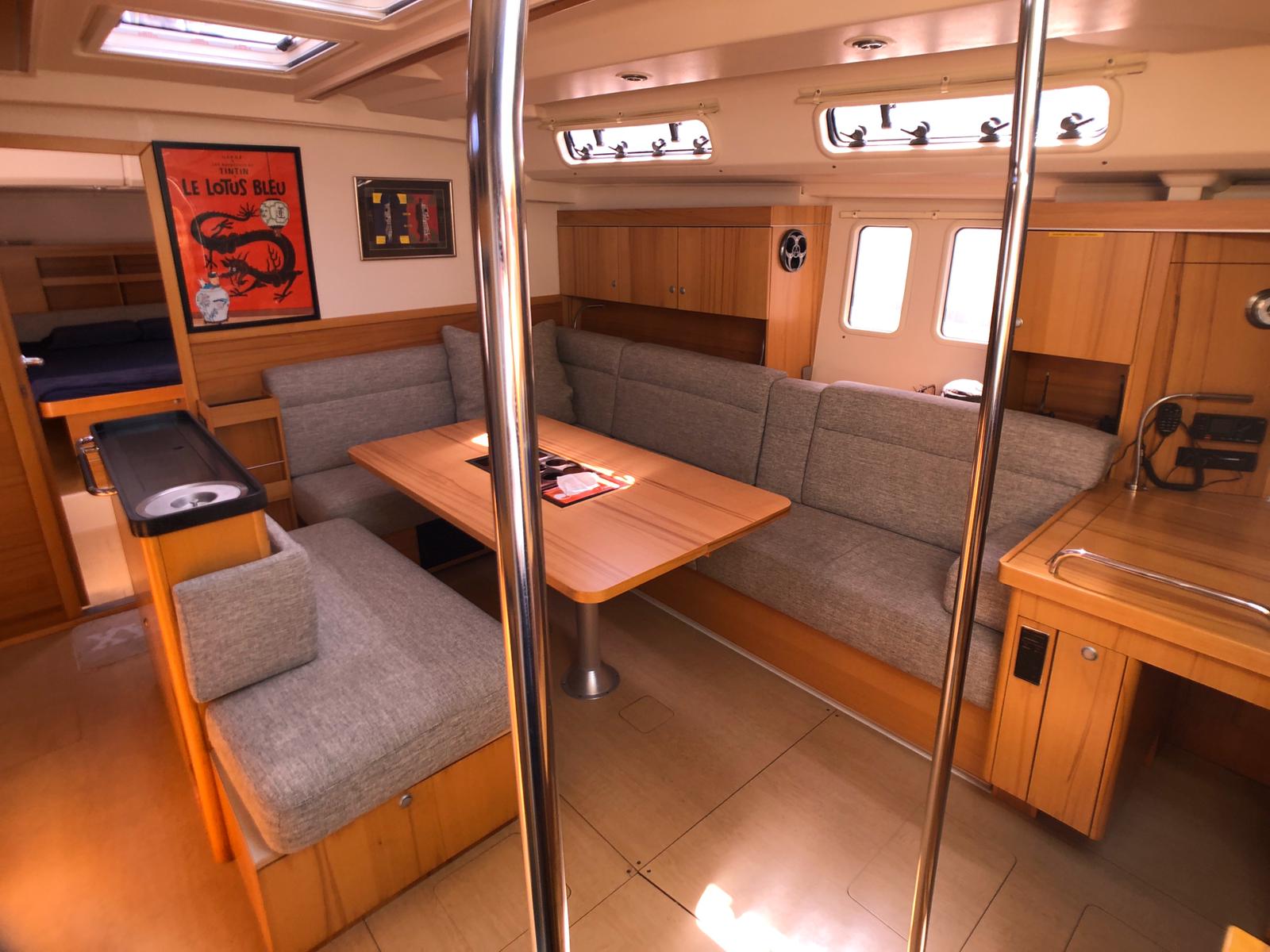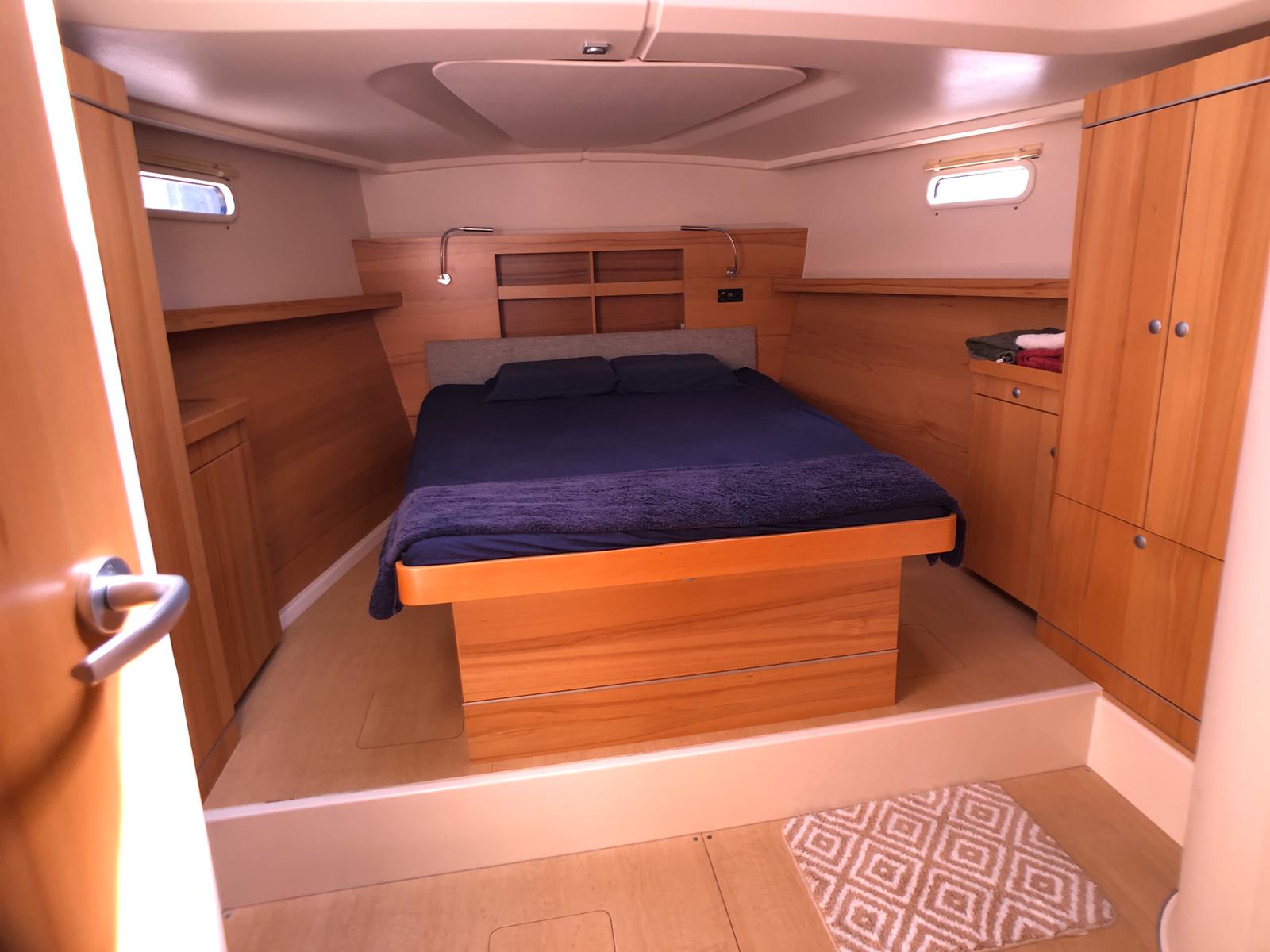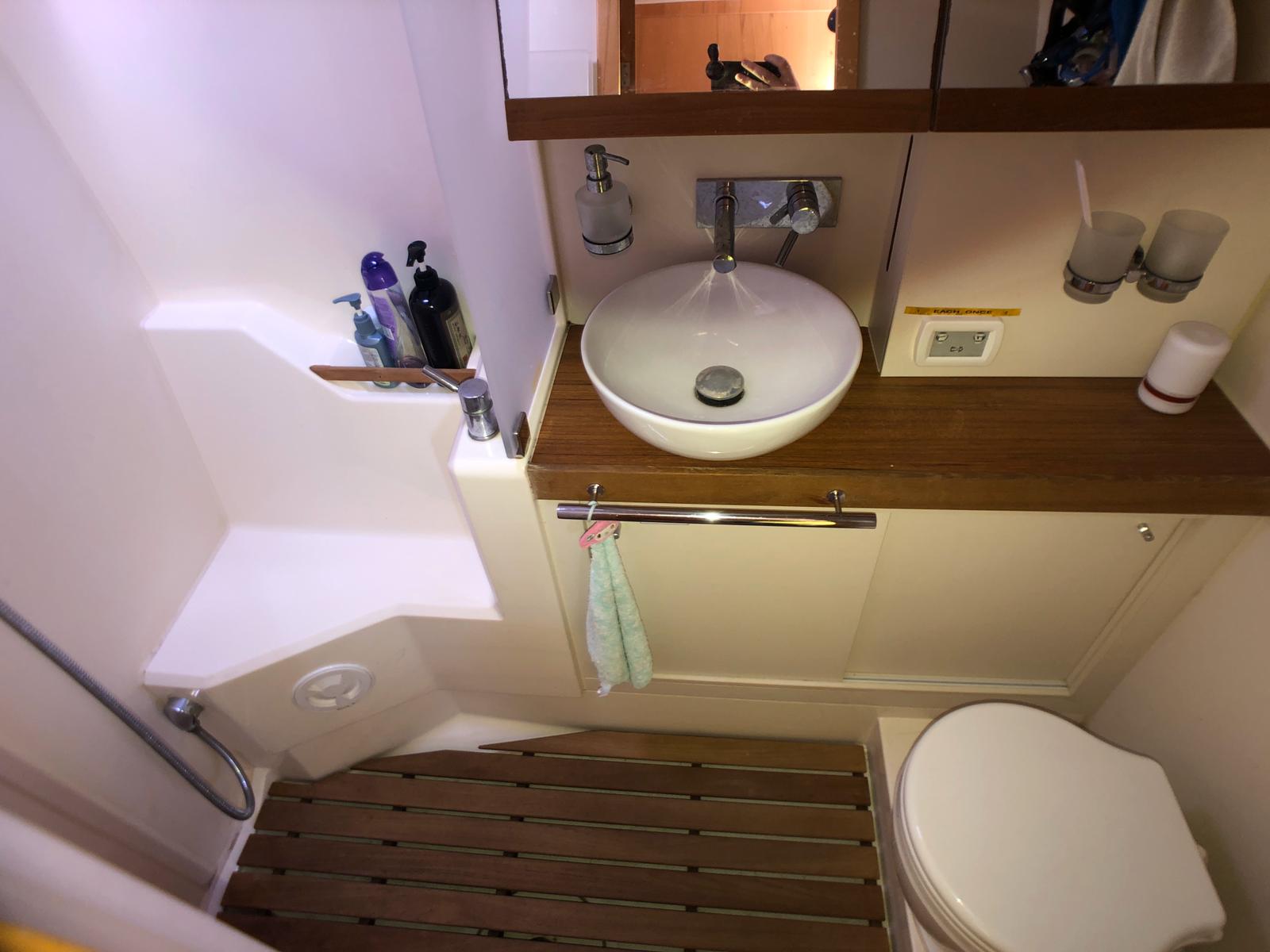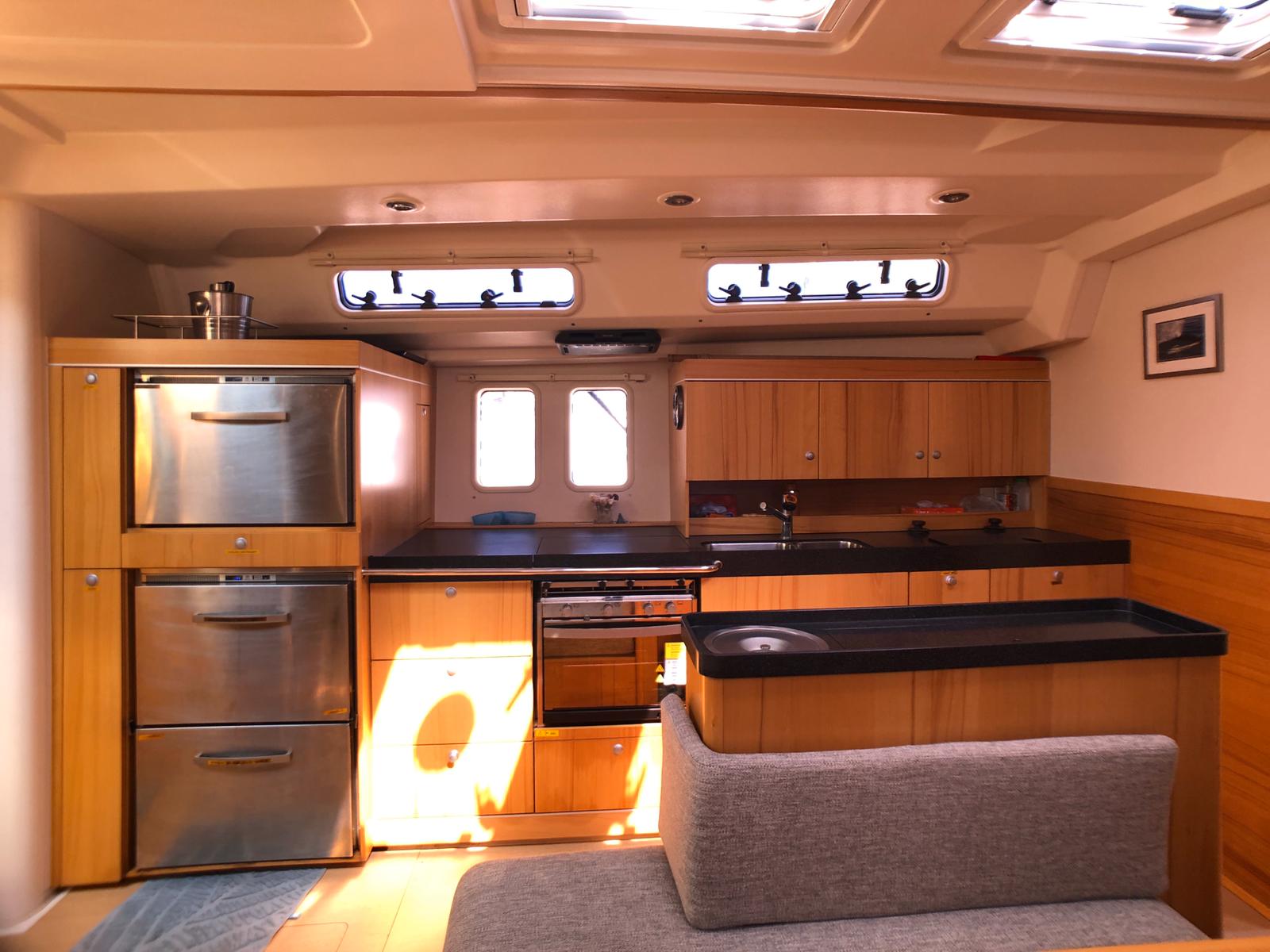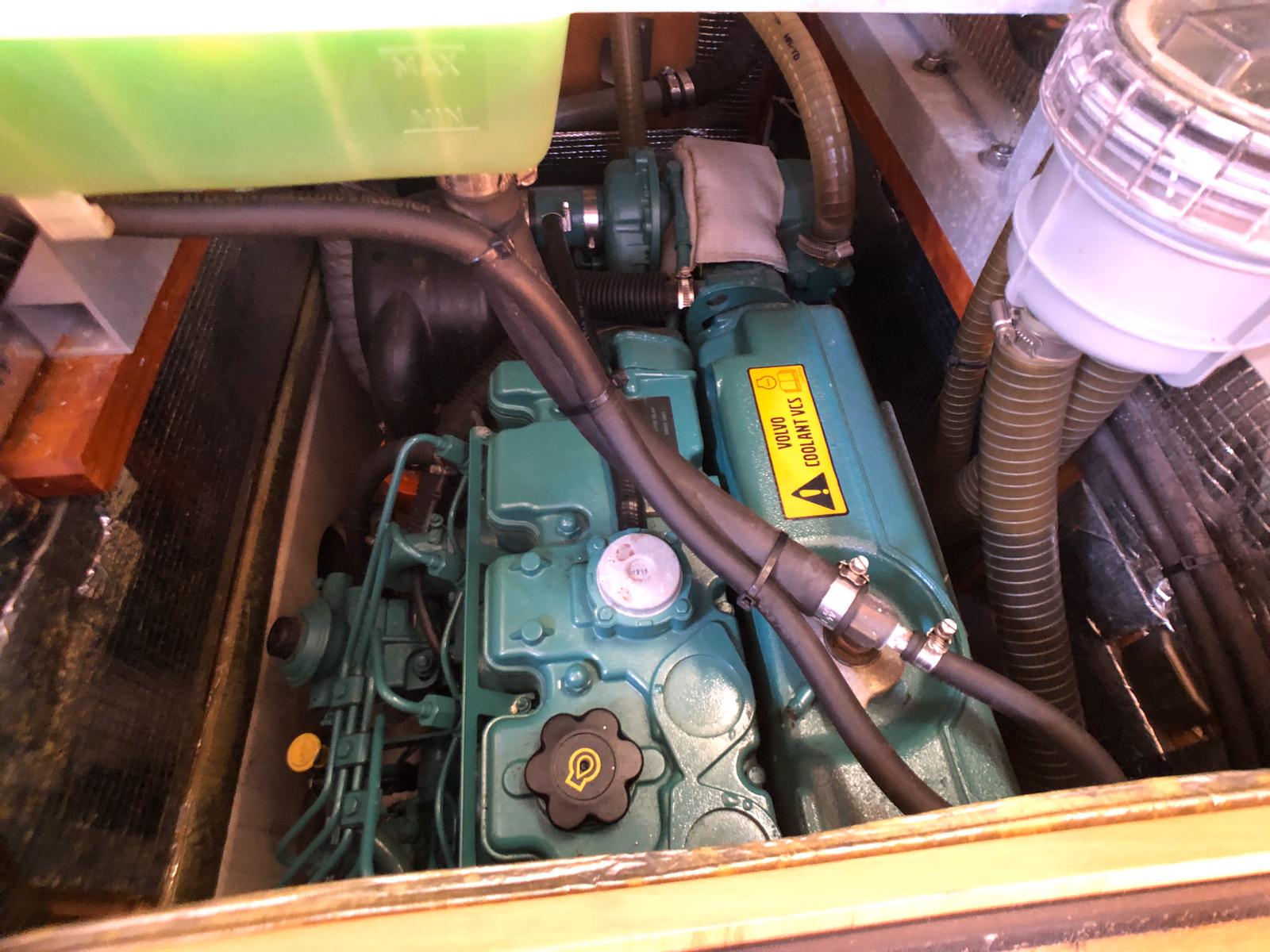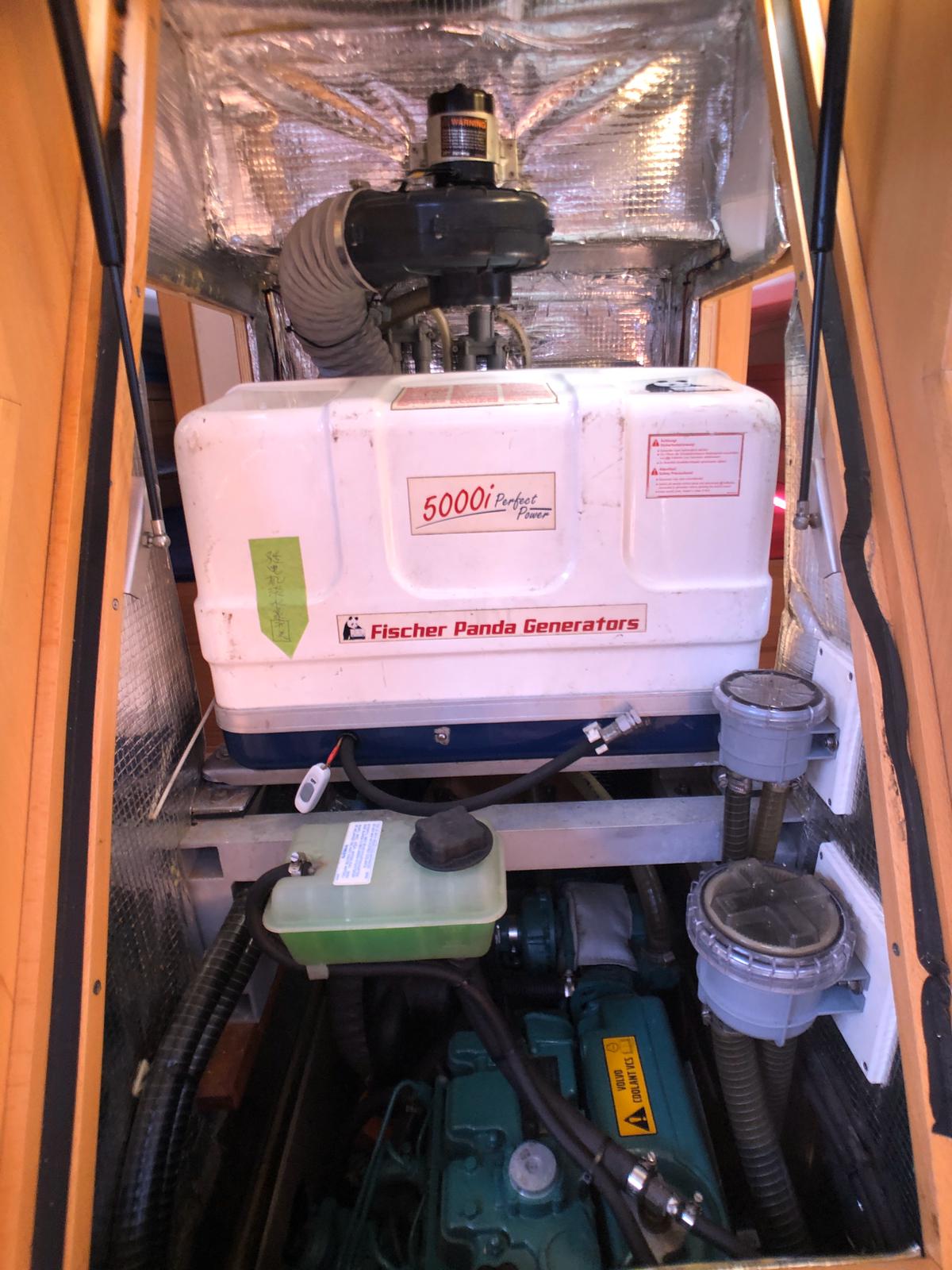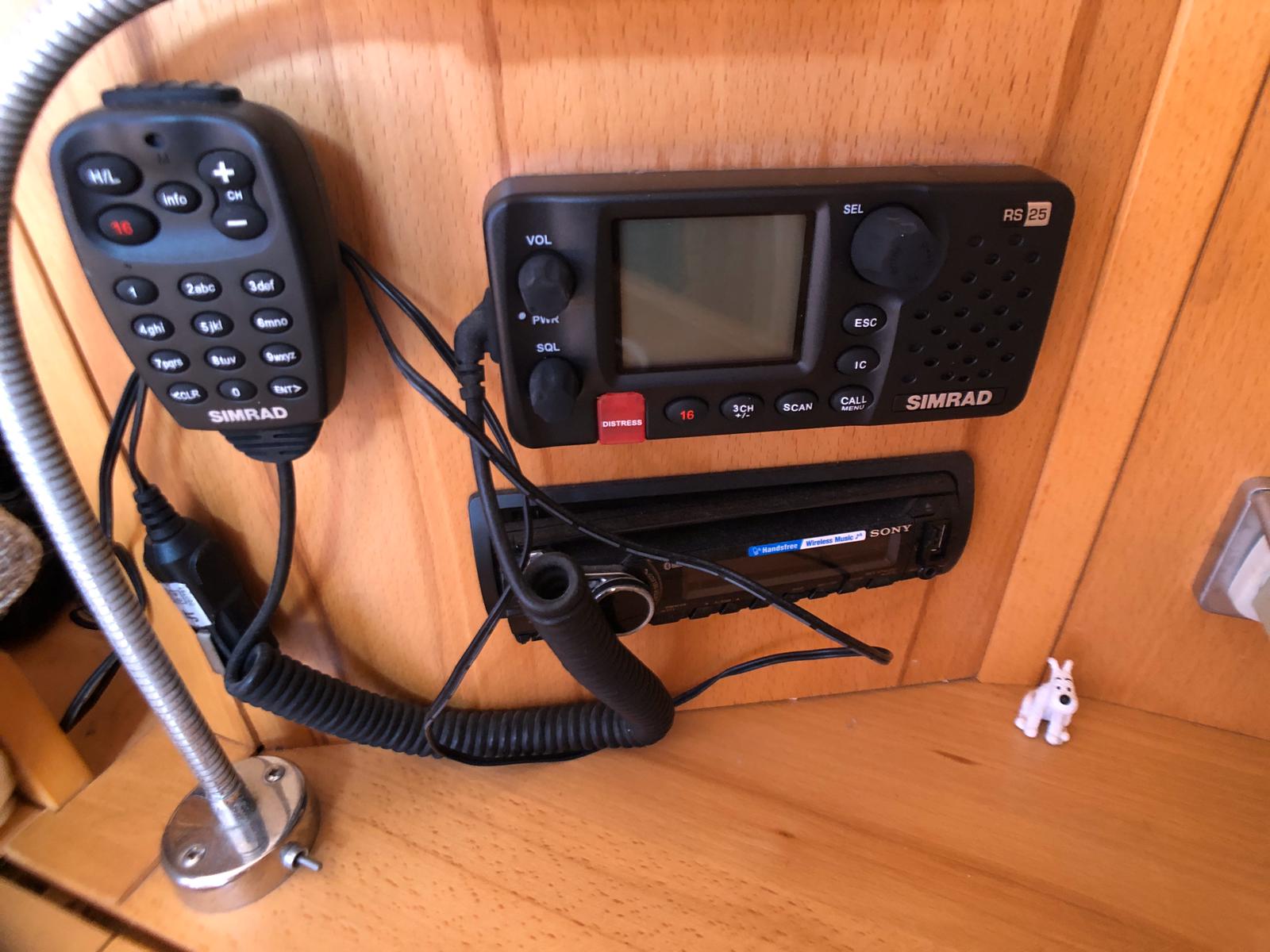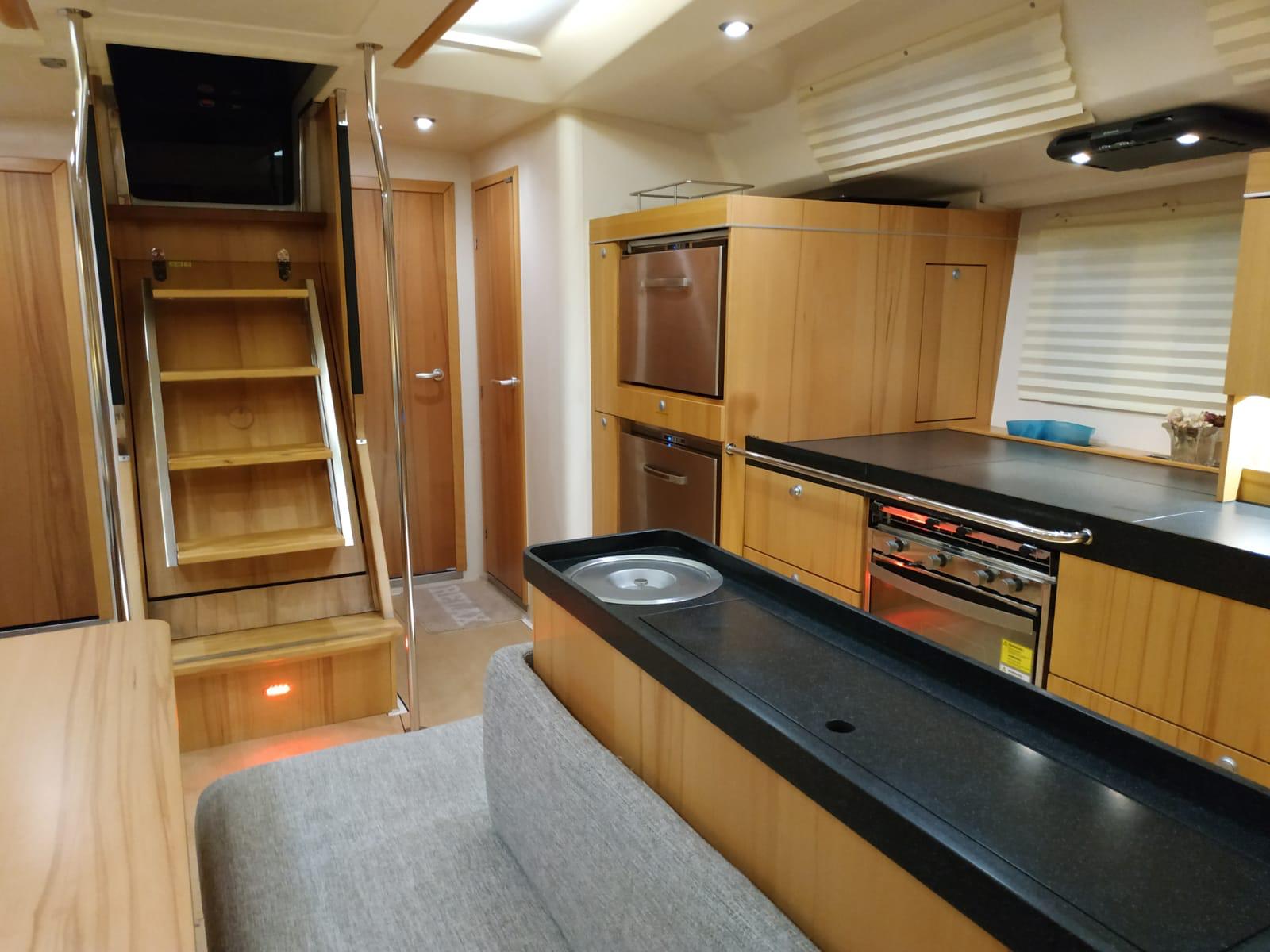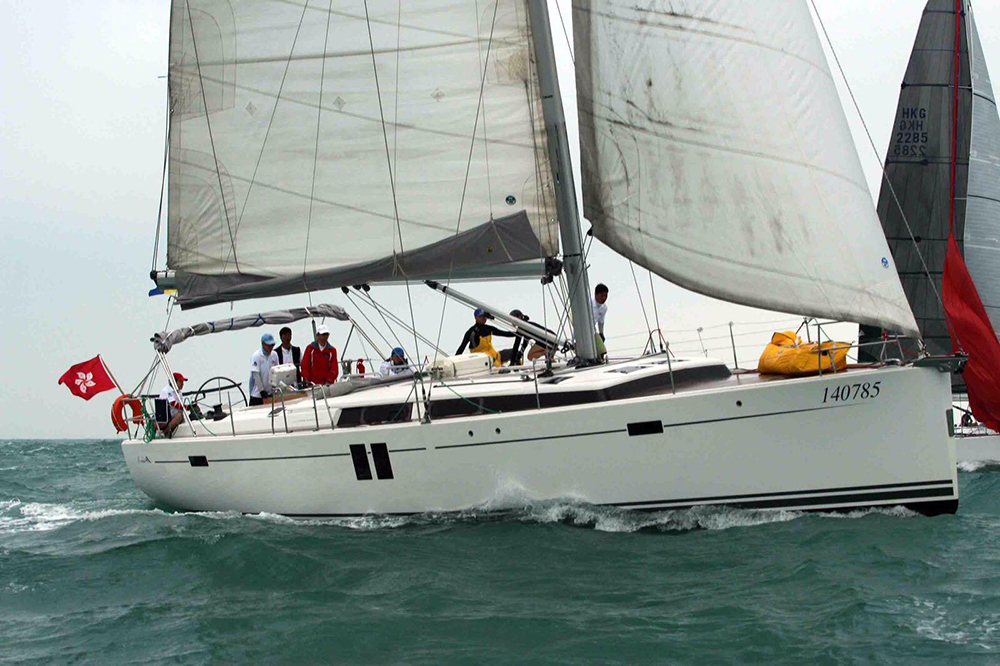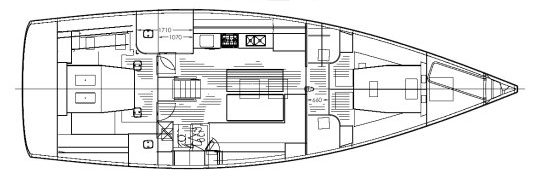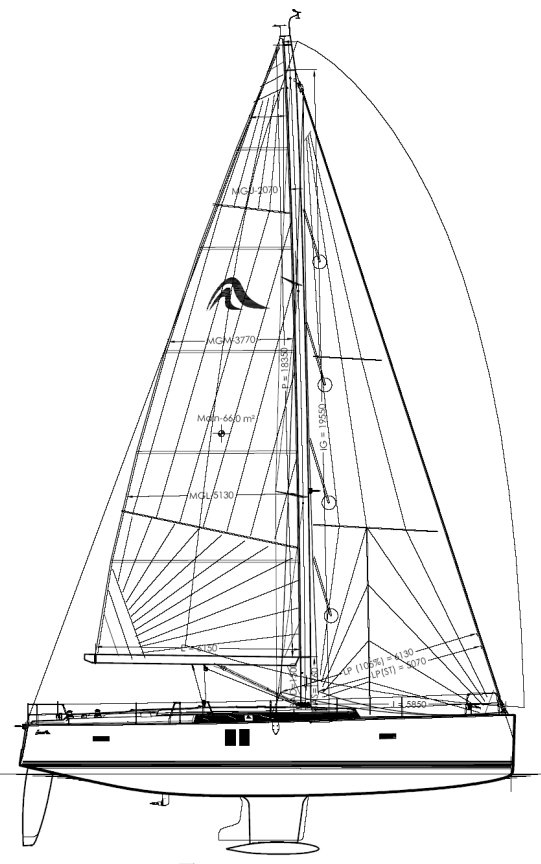Orca
Cabins: 1 master cabin (forward), 2 guest cabins (aft)
Berths: 3 x double
Heads: 2 en suite with shower and an additional shower room
Sails
Self-tacking jib (North Sails)
125% furling Genoa (UK Sails)
Main sail (UK Sails)
Spinnaker
Navigation
SIMRAD IS20 Wind Instruments and Full Function Graphic Display
SIMRAD RS25 VHF at chart table
SIMRAD NS512 touch screen with GPS chart plotter
SIMRAD AP24 Autopilot (with wireless remote conrol)
SIMRAD NAIS 300 AIS Class B transponder
Comfort
Refrigerator and freezer
Climma Air-conditioning (33,000BTU)
JABSCO electric toilets with sea water flush
Gas cooker with oven and extractor hood
Mahagony Joinery
Hanse 495 review
“Hanse Yachts sure has come a long way since it made its American debut at the U.S. Sailboat show in Annapolis in the late 1990s. Back then I thought its boats were small and unremarkable, save for the fact they were built in what was once East Germany. Hanse’s founder and chief visionary, Michael Schmidt, had big plans, however, and since then Hanse Yachts has evolved into one of the highest-volume boatbuilders in the world. This past fall, during a test sail of the Judel/Vrolijk-designed Hanse 495 on a spectacular day in New England, I had the opportunity to experience firsthand some of the reasons for that success.
Construction
The 495’s hull is solid hand-laid fiberglass below the waterline with balsa core in the topsides. The deck is also cored with balsa, while the hull is stiffened with a solid fiberglass grid. Both the hull and deck are laminated with isophtalic gelcoat and vinyelseter resin to resist blistering, and the standard T-shaped deep-draft and optional L-shaped shoal-draft keels are both cast iron. Overall construction quality is good.
On Deck
The 495 has striking lines—the bow is plumb, the topsides are tall with oversized hull ports, the coachroof is low-slung, and the stern is wide. Stepping aboard (several fixed steps on the dock made it easy to get up through the lifeline gate), I liked the easy-to-navigate side decks, although I would have liked to see a longer coachroof grabrail.
I was impressed by the spacious cockpit, which is centered around a large, sturdy table with folding leaves. The cockpit seats are wide enough to be comfortable and long enough to stretch out on, while the stainless steel framed table provides excellent handholds and brace points.
The transom drops down to reveal a large swim platform and a clever liferaft storage compartment. Access through the stern area is excellent, thanks to the boat’s dual-helm configuration. Lines led through a bank of clutches to winches mounted close to the two wheels make sail trim from both helm stations a snap. The boat’s double-ended mainsheet and self-tacking jib make it extremely easy to sail single-handed, although the lack of a traveler means you have to rely on the vang to control twist in the main. On-deck stowage is available in the good-sized cockpit lockers under the seats and in a large sail locker forward.
Accommodations
The accommodations plan on the Hanse 495 is impressively customizable for a production boat, with three very different basic cabin layouts available. The boat I tested had the master cabin forward and two guest cabins aft. Another option includes twin staterooms in the bow and a single owner’s stateroom aft. There are three different wood veneers (mahogany, cherry or teak) and several upholstery colors to choose from.
No matter which layout you choose, the saloon will be open and stylish, with a spacious Euro-style galley, a large settee and 6ft 10in of headroom. The space is bright, thanks to multiple hull ports, and well ventilated, thanks to four opening ports and two large opening hatches. There’s also room for a good-sized head and a proper forward-facing nav station with a large chart table.
Hanse describes its accommodations design as “loft style,” an approach that is readily apparent in the master cabin forward. It has a legitimate walk-around “bed,” generous stowage and an ensuite “bathroom” that would not be out of place in a small city apartment. The guest cabins are less “loft-like,” but are still plenty spacious enough to be comfortable.
Under Sail
I sailed the Hanse 495 off Manchester, Massachusetts, under crisp sunny skies in flat water with about 8-12 knots of breeze. The helm was light and well balanced. I appreciated the tactile feel of the steering and the way the hull cut a clean wake through the water. Visibility to leeward and forward to the jib telltales was excellent from both helm stations, and the seats were comfortable, though they felt a little exposed.
I also liked the easy visibility and access to the chartplotter, which was mounted on the back of the cockpit table, and the fact that the crew could both trim and reef sails without ever needing to go forward.
Sailing upwind we tacked through about 80 degrees, and I was able to get the knot meter to just touch 7 knots in the puffs, although speeds in the high 5s and 6s were the norm in the mostly single-digit wind we enjoyed. That’s pretty good, I thought, for a 30,000-pound boat.
The 495’s excellent light-air performance is really not too surprising considering its low-drag hull was drawn by the go-fast guys at Judel/Vrolijk. The L-shaped 8,830 pound keel draws almost 7ft, and even with the self-tacking jib, the boat’s sail area totals 1,272ft2.
Handling the boat was effortless. Once the in-mast furling main and self-tacking jib were trimmed for sailing hard on the breeze, all I had to do was put the helm over and steer to the telltales.
Under Power
The 495’s standard 72hp engine provides plenty of power, while the boat’s deep rudder and L-shaped keel provide plenty of maneuverability. But we didn’t need any of that to get off the dock, thanks to our test boat’s proprietary SMS joystick mooring system and its dual retractable thrusters. We deployed the thrusters, pushed the joystick to starboard, and away we went. Being able to power sideways out of a tight spot is cool, but you must retract the thrusters before accelerating forward or they’ll be damaged. Boat speed under power was in the 8-9 knot range. Engine noise down below was noticeable, but still within the acceptable range.
Conclusion
If you regularly use words like “traditional,” “transom counter” or “sheer spring” to describe your ideal cruising boat, the Hanse 495 will certainly not be your cup of tea. But if you’re looking for a spacious, stylish, well-designed modern boat that’s fun, easy to sail and will turn heads going in and out of the harbor, the Hanse 495 may be right in your strike zone. It beautifully combines attitude and elegance with performance and function.
Sail Magazine, August 2, 2017

